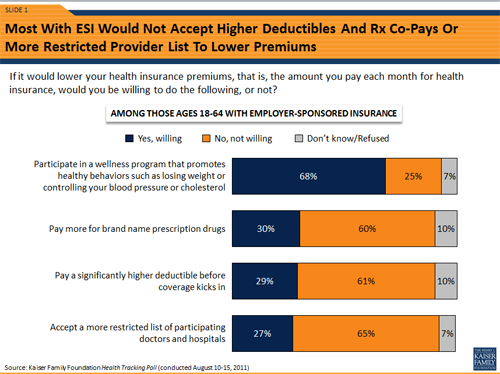When it comes to communicating about workplace wellness, there’s some debate about what the company’s message should be.
Some say a company should never mention costs. The messaging should focus instead on family, retirement dreams, being around to see the grand kids. “XYZ company offers health benefits to help you reach your dream — whatever that dream is.” Sound familiar?
The logic is that employees aren’t really interested in their company’s costs. Plus, they can avoid potential accusations of ulterior motives.
Frankly, this logic falls flat for me and presents a few inherent problems.
Employees want the dots connected
It doesn’t give employees a heck of a lot of credit. Employees understand what’s driving their employer’s interest in their well-being. They even feel something approaching empathy for their company’s situation. In a Kaiser Family Foundation poll, two out of three employees said “they were offered the best coverage the company could afford given financial circumstances.”
 It ignores that employees want the dots connected. Employees are all for wellness efforts that help lower premiums.
It ignores that employees want the dots connected. Employees are all for wellness efforts that help lower premiums.
In this same Kaiser poll, 68 percent said they’d participate in a wellness effort if it meant lower premiums. They understand that wellness is a business equation. It’s an investment like any other, with productivity, absenteeism, engagement, retention and lowered health care bills as the company ROI, flat-lined or minimized cost-shifting and continued career opportunity as the employee ROI.
Avoid corporate spin
It turns health communications into corporate spin. Reading a message of “we care about your health” doesn’t pass muster when leaders aren’t ferreting out the cultural and environmental stressors that lead to poor well-being. It’s immediately questionable, and so is everything else along with it, such as health privacy — an assurance companies can’t afford to have questioned.
Workplace wellness isn’t only about cost, and it isn’t solely about employees being alive to see their grand kids. It’s about all of this — maybe more virtuous, maybe less, depending on the company.
The magic is in bringing together these two important messages in how companies deliver workplace wellness and how they communicate about it.
This was originally published on Fran Melmed’s Free-Range Communication blog.
